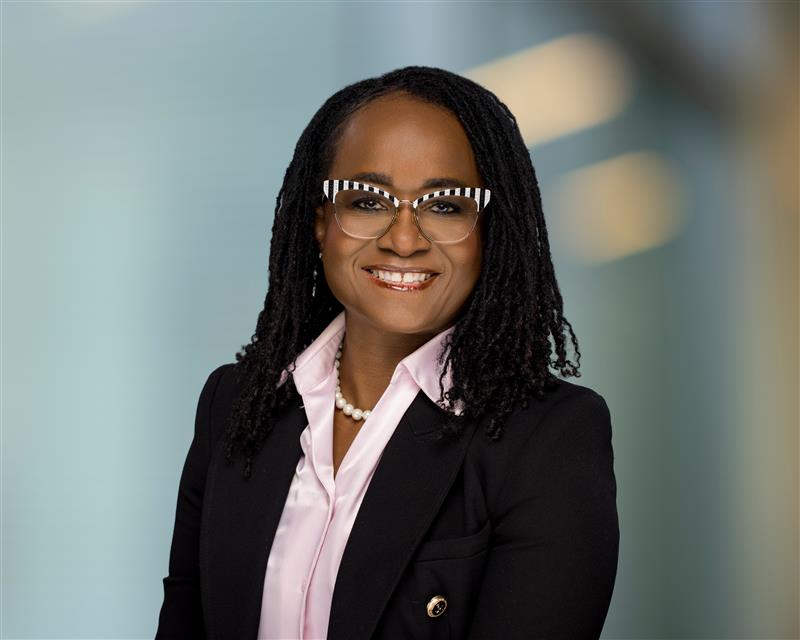Dear colleagues,
It’s been an extraordinary few weeks at the foundation. I’m both inspired and energized by our chair’s recent announcement: a $200 billion commitment between now and 2045. This news is a bold call to action and one that challenges each of us to think bigger, move faster, and ensure that the work we are doing today is worthy of the future we want to build.
For the Pathways team, this means reflecting on our work so far and considering how we can move forward in more innovative and impactful ways. As we bring that mentality to bear in charting the course for this new chapter, however, we remain unwavering in our big picture goal: every student deserves to move from high school into postsecondary education and their career with purpose, clarity, and support.
Realizing that vision starts with ensuring all learners have the agency to make informed choices. It means that all students can access the data that will help them understand the ROI of their educational options and investments. This includes understanding the value of college-level learning in high school, the relevance of programs that connect academics to real-world skills, and the long-term opportunities these experiences can unlock. And it means intentionally integrating these components in ways that center the student and fully realize the benefits of each component in a holistic way.
This is the work we are stepping into with urgency and determination. In the years ahead, we will seek partners who are building towards this integrated approach. It is our aim to work with partners to bring together the strategies most proven to scale gap closures in student success metrics, enabled by the revolutionary technology changes that are redefining the learning experience as we speak. This means, above all, working collaboratively with new and existing partners to center the critical phases of the learner journey: that students get credit for all learning regardless of sector or institution; that they get advising support that is equally seamless across K-12, postsecondary, and beyond, and that they use services and technologies that most enable an integral pathways-based experience.
Our team is already embracing this momentum. Just last week, colleagues gathered in New Orleans to share an update with funders and partners on the Commission on Purposeful Pathways. In the months ahead, the Commission will explore what experiences best connect students with purpose, clarity, and opportunity, laying the groundwork for the Pathways Impact Fund – a new approach to building consensus in the field and accelerating change at scale. While this work builds on lessons from our past efforts, this Commission’s work represents a bold next step—bringing together a group of leaders, including students, to examine the critical links between high school experiences and postsecondary and career outcomes and diving deeper to understand how to implement and build on what works.
This newsletter is a space for shared learning, updates, and honest conversation. I look forward to using it to highlight the real-world work our partners are leading and to work alongside all of you as we turn this moment into lasting progress.
Warmly,
Cheryl Hyman
Director, Pathways
What we’re reading, listening to, and attending.
Innovative funding = impactful outcomes
A new report from The College in High School Alliance (CHSA) digs into a crucial piece of dual enrollment: sustainable funding that increases access and success for students.
- The big picture: As the report emphasizes, "a state’s dual enrollment funding model can either open the doors of program access or present an insurmountable barrier to participation for students (or districts, or postsecondary institutions) facing financial struggles.”
- Why it matters: Without consistent, equitable funding, programs risk reinforcing the very barriers they aim to break. The report lays out how states can design funding models that expand access, reduce costs, and prioritize quality for students who need it most.’
- Dive Deeper: While there is no one size fits all model for dual enrollment, the report (check out page 40) maps a number of state models that are exemplars in having funding models that expand access and success.
Actionable playbooks, actionable progress
Education Strategy Group’s new playbook outlines levers states can pull to accelerate student success and economic mobility – a critical resource as policymakers look to deploy and scale actionable solutions.
Highlights include:
- A focus on cross-system alignment—breaking down silos between education and workforce.
- A strong push for equity-centered metrics and disaggregated data use.
- Clear policy actions to support career-connected learning from high school through postsecondary.
- Strategic attention to credential value, work-based learning, and labor market outcomes.
- Practical insights on funding, governance, and data infrastructure to support systemic transformation.
Clear data drives clear direction
At a recent Bipartisan Policy Center webinar, America’s Workforce: Measuring What Matters, panelists made the case: strong data systems are the backbone of education-to-career success.
What they're saying:
- “Federal leaders play an important role in removing barriers to make state data work even more successful,” said President and CEO, DQC, Jennifer Bell-Ellwanger.
- Dr. Matt Berry, Executive Director of the Kentucky Center for Statistics, emphasized the ways in which reimagined statewide longitudinal data systems are being used to “inform better decision making for policymakers, practitioners, and the public at large.”

